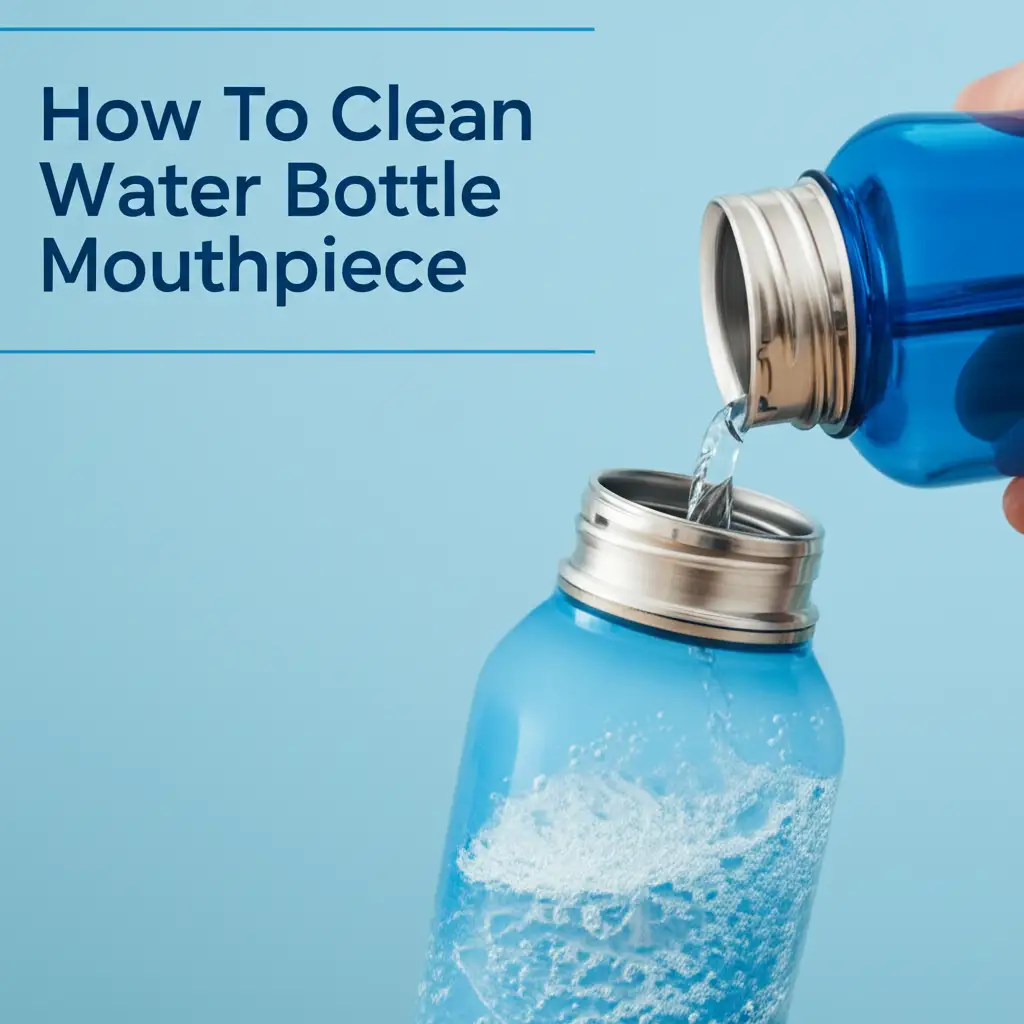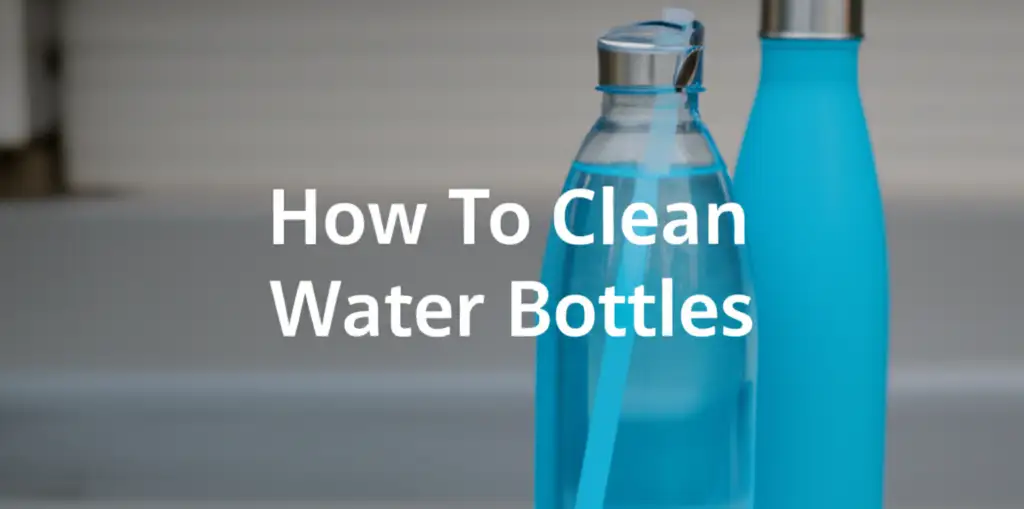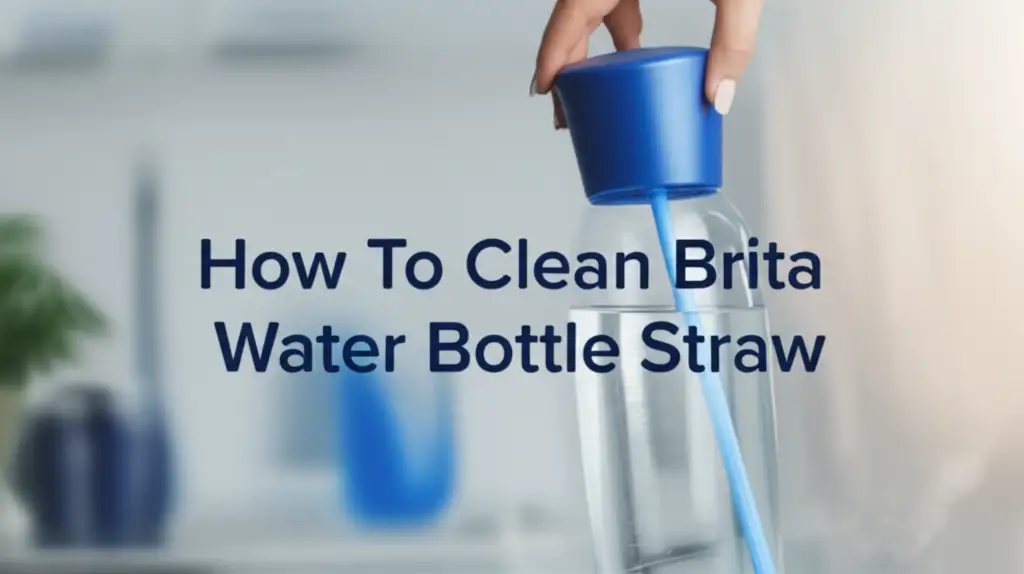· Home Cleaning · 18 min read
How To Clean Straws In Water Bottles

Effortless Ways to Clean Straws in Your Water Bottle
Keeping our water bottles clean is important for health. Yet, many people forget about the straws. These small tubes can harbor dirt, mold, and bacteria. This can lead to unpleasant tastes or even illness. Knowing how to clean straws in water bottles correctly ensures safe hydration. It also helps your bottle last longer.
Straws inside water bottles come into contact with your mouth and the water. They collect residue from drinks and saliva. Over time, a film can build up, creating a breeding ground for germs. Regular cleaning removes this film. It prevents the growth of harmful microorganisms. This article will guide you through simple steps. You will learn about essential tools and effective cleaning solutions. We will cover everything from basic scrubbing to deep cleaning methods. By the end, you will know how to keep your water bottle straws sparkling clean.
Takeaway
- Use a dedicated straw brush for best results.
- Clean straws after every use with dish soap and water.
- Deep clean weekly with vinegar or baking soda solutions.
- Ensure straws dry completely to prevent mold growth.
- Replace damaged or discolored straws promptly.
To clean straws in water bottles, use a long, thin straw brush with warm soapy water to scrub the inside thoroughly. Rinse both ends and the outside completely. For deeper cleaning, soak straws in a solution of white vinegar and water or baking soda before scrubbing. Always allow them to air dry fully.
Understanding Why Cleaning Water Bottle Straws Matters
Many people carry water bottles daily. They might fill them multiple times a day. We often focus on cleaning the bottle itself. However, the straw part is just as important. In fact, it can be more prone to dirt and germ buildup. I know from my own experience how easily a straw can get neglected. This neglect can lead to real problems.
Straws have narrow, enclosed spaces. These spaces are hard to reach. Moisture often stays inside them. This combination creates a perfect home for germs. Bacteria and mold love damp, dark places. They can grow quickly inside a straw. Drinking from a dirty straw means consuming these unwanted guests. This can lead to stomach upset or other health issues. It really makes you think about what might be lurking in your bottle.
Think about the residue from your drinks. Even plain water can leave mineral deposits. Flavored drinks, especially those with sugar, leave sticky films. These films stick to the straw’s inner walls. Over time, this buildup becomes visible. It can look like discoloration or slimy residue. This residue not only looks bad but also provides food for bacteria. It is important to prevent this buildup from happening.
Regular cleaning removes these residues. It stops germs from taking hold. A clean straw tastes better too. You get the true flavor of your drink. Plus, it extends the life of your straw and bottle. Neglecting the straw means you might need to replace your bottle sooner. Taking a few minutes to clean it properly is a small effort. This small effort brings big health and practical benefits.
Essential Tools for Effective Straw Cleaning
You need the right tools to clean water bottle straws well. The narrow design of most straws makes them tricky. Your regular dish sponge will not reach inside. This is why specialized tools exist. Having these items ready makes the cleaning process simple. I always keep my cleaning kit nearby.
The most important tool is a straw cleaning brush. These brushes are long and thin. They have bristles at the end. The bristles are firm enough to scrub away grime. They are also soft enough not to scratch the straw. You can find different sizes of these brushes. Make sure you get one that fits your straw’s diameter. A good brush reaches from one end of the straw to the other. This ensures you can clean the entire inside surface.
Next, you will need dish soap. Any standard dish soap works fine. It helps break down oils, residues, and food particles. Soap creates suds that lift dirt away. Warm water is also key. Warm water helps the soap work better. It softens any dried-on gunk. A small bowl or sink basin is useful for soaking. This allows the straw to sit in the cleaning solution.
For deep cleaning, you might want white vinegar or baking soda. These natural cleaners are powerful. Vinegar is excellent for breaking down mineral deposits. It also kills bacteria and mold. Baking soda is abrasive. It helps scrub away tough stains. It also deodorizes. I always have both on hand for various cleaning tasks. For example, vinegar is excellent for how to clean hot water heater with vinegar.
Lastly, a drying rack or a clean towel is helpful. Proper drying is vital. It prevents mold and mildew from growing. Air drying on a rack allows good airflow. A clean towel absorbs moisture quickly. Using these basic tools makes straw cleaning simple. They ensure a truly clean and hygienic straw every time.
Step-by-Step Guide to Manual Straw Cleaning
Cleaning your water bottle straw by hand is the most effective method. It ensures you reach every part. This process is straightforward. It becomes a quick habit once you do it a few times. I follow these steps regularly to keep my straws fresh.
First, you need to disassemble your water bottle. This means removing the straw from the lid. Some straws pull out easily. Others might twist off. Make sure you separate all parts of the straw system. This includes any silicone bits or adapters. Cleaning individual pieces is much simpler.
Next, rinse the straw under warm running water. This helps remove any loose particles. It also wets the inside of the straw. This prepares it for scrubbing. A quick rinse can sometimes get rid of simple dirt. But for a thorough clean, more is needed.
Now, apply a small amount of dish soap to your straw brush. Insert the brush into one end of the straw. Push the brush through the entire length. Twist and scrub as you go. Make sure the bristles touch all sides of the inner wall. Push the brush out the other end. Then, reinsert it from the opposite side. Clean the straw from both ends. This ensures you reach the middle part effectively. Some water bottles, like how to clean 5-gallon water bottles, also benefit from thorough manual scrubbing.
Once the inside is clean, scrub the outside of the straw. Use a soapy sponge or cloth for this. Pay attention to the ends where the straw connects to the lid. These areas can collect residue. Scrub the mouthpiece too. After scrubbing, rinse the straw thoroughly under running water. Make sure all soap is gone. Hold it up to the light to check. Look for any remaining residue or cloudiness. If you see any, repeat the scrubbing and rinsing steps.
Finally, allow the straw to air dry completely. Place it vertically on a drying rack. You can also stand it in a clean glass. Good airflow is important. Do not reassemble your bottle until the straw is bone dry. This prevents mold growth inside. Following these steps ensures your straw is spotless. It makes sure it is safe for your next drink.
Deep Cleaning Water Bottle Straws with Natural Solutions
Sometimes, basic scrubbing is not enough. You might notice a lingering smell. There might be visible discoloration or stubborn buildup. This is when deep cleaning is needed. Natural solutions like vinegar and baking soda are powerful. They tackle tough dirt and neutralize odors. I use these methods weekly or whenever I notice issues.
One effective method uses white vinegar. Vinegar is acidic. It breaks down mineral deposits and kills bacteria. To use it, mix equal parts white vinegar and warm water in a bowl. Submerge your disassembled straw in this solution. Make sure the straw is completely covered. Let it soak for at least 30 minutes. For very stubborn grime, you can soak it overnight. After soaking, scrub the straw with your brush. Rinse it thoroughly with clean water. The vinegar smell will go away as it dries. Vinegar is also great for addressing how to clean water spots off glass, which can appear on your bottle too.
Another natural deep cleaner is baking soda. Baking soda is a mild abrasive and a natural deodorizer. It helps lift grime and absorb smells. Make a paste with baking soda and a little water. You want a thick consistency. Apply this paste directly onto your straw brush. Scrub the inside and outside of the straw with the paste. Let it sit for a few minutes. Then, rinse thoroughly with warm water. You can also make a soaking solution. Dissolve a tablespoon of baking soda in a cup of warm water. Soak the straw for an hour before scrubbing.
For very tough stains or hard water buildup, you can combine methods. Soak in vinegar first. Then, follow up with a baking soda scrub. These natural solutions are safe. They are effective. They avoid harsh chemicals. This is important for items you drink from. They help remove even how to clean hard water stains on shower glass, showing their power against mineral deposits. Always ensure a complete rinse after using these cleaners. This makes sure no residue is left behind.
Advanced Techniques for Stubborn Dirt and Mold in Straws
Sometimes, dirt or mold can really cling to your water bottle straw. Standard cleaning might not get rid of it all. This is especially true if you forget to clean your straw for a while. These situations call for stronger measures. But use these methods carefully. They ensure complete cleanliness. I had to use an advanced technique once for a straw I found at the back of a cupboard.
Bleach solution is a powerful disinfectant. It kills mold and bacteria. It also removes stains. You must use bleach sparingly and dilute it properly. Mix one teaspoon of bleach with one gallon of water. Submerge your straw in this solution for no more than 5-10 minutes. Any longer could damage the plastic or silicone. After soaking, scrub the straw vigorously with your brush. Rinse it many times with hot water. Make sure there is no bleach smell left. Bleach can be dangerous if ingested. So, rinse until you are certain it is clean. This method is effective for severe mold, similar to how one might treat mold in other water systems, such as how to clean refrigerator water dispenser mold.
For mineral buildup that vinegar cannot remove, you might consider citric acid. This is a stronger acid than vinegar. It is found in lemon juice. You can buy citric acid powder. Mix a tablespoon of citric acid powder with a cup of hot water. Soak the straw in this solution for 15-30 minutes. Scrub and rinse well. Citric acid is food-safe. It is very effective against hard water deposits. This is similar to how you might tackle how to clean sediment from water heater where mineral build up can cause problems.
If your straw is dishwasher safe, this can also be an advanced cleaning method. Place the straw in the utensil basket. Run a hot cycle. The hot water and strong detergent can help. However, dishwashers do not always reach deep inside the straw. Always follow up with a manual brush clean if using a dishwasher. This ensures the inside is truly spotless. No matter the method, safety comes first. Always wear gloves with bleach. Always rinse thoroughly. These advanced techniques should only be used when necessary. They ensure your straw becomes truly hygienic again.
Preventative Measures for Keeping Your Straws Clean Longer
Cleaning is important, but preventing dirt buildup saves time. It also helps your straws last longer. Good habits make a big difference. I have found that a few simple steps can keep my water bottle straws cleaner for weeks. This means less frequent deep cleaning.
The most important step is daily rinsing. After every use, give your straw a quick rinse. Use warm water. This washes away fresh residues before they dry and stick. A quick rinse takes only seconds. It stops minor issues from becoming major problems. Do this even if you only drank plain water. Water still leaves behind mineral traces.
Air drying completely is vital. Moisture is mold’s best friend. Never reassemble your water bottle with a damp straw. After washing, stand the straw upright. Use a drying rack or a cup. Ensure good air circulation around it. This allows all water to evaporate. Sunlight can also help. It has natural sanitizing properties. If a straw has a strange smell, it usually means it has not dried properly.
Consider cleaning immediately after use, especially with flavored drinks. Sugary beverages or milky drinks leave sticky residues. These residues attract bacteria fast. If you cannot clean immediately, at least rinse the straw thoroughly. Get as much of the drink residue out as possible. This buys you time until you can properly wash it.
Store your bottle and straw properly. Keep them in a clean, dry place. Avoid putting them away damp or in an enclosed area. This prevents mold spores from settling in. If you store your bottle with the lid on, make sure it is completely dry inside. You can also store the straw separately. This allows more air exposure.
Finally, inspect your straws regularly. Look for signs of wear, damage, or persistent discoloration. If a straw looks cloudy after cleaning, it might be time to replace it. Small cracks can harbor germs. Sometimes, no amount of cleaning will fix an old, worn-out straw. Replacing it is the best solution for hygiene. These preventative steps keep your straws clean and safe. They make your cleaning routine much easier.
Choosing the Right Cleaning Products for Water Bottle Straws
Picking the right cleaning products is simple. You do not need many specialized items. Standard household cleaners work well for most situations. The key is to select safe and effective options. I always consider what is going into my body when picking cleaners.
Your everyday dish soap is usually sufficient for regular cleaning. Look for a mild, unscented dish soap. It effectively cuts through grease and food residue. It is designed to be safe for food contact surfaces. Make sure to rinse thoroughly after using any soap. You want no soapy taste left behind. Dish soap is gentle enough for daily use. It will not damage most straw materials.
For deeper cleaning, white vinegar is a top choice. It is natural. It kills many types of bacteria and mold. It also removes mineral deposits. Vinegar is food-safe when properly rinsed. It does not leave harmful residues. Many people use it for cleaning various items, including food containers. It is an excellent alternative to harsher chemicals. It is also good for cleaning other water components, like how to clean under sink water filter or even for general water line cleaning.
Baking soda is another natural cleaning powerhouse. It helps with scrubbing and deodorizing. It is mildly abrasive. This means it can help scrub away stubborn grime without scratching. It is also great for absorbing bad odors. You can use it as a paste or dissolve it in water for soaking. Like vinegar, baking soda is safe. It is an everyday kitchen item.
Avoid harsh chemical cleaners if possible. These include strong bleaches or industrial degreasers. While effective, they can be hard to rinse completely. They might leave chemical residues. These residues can be harmful if ingested. Always stick to products that are safe for food contact. If you must use bleach, dilute it very well. Then rinse exceptionally thoroughly.
Some companies sell specialized water bottle or straw cleaning tablets. These dissolve in water. They create a cleaning solution. They can be convenient. Check the ingredients. Make sure they are safe. For most people, a good straw brush, dish soap, vinegar, and baking soda are all you need. These products are effective. They are affordable. They are readily available.
Maintaining Your Water Bottle for Overall Hygiene
Cleaning the straw is a big part of water bottle hygiene. But the straw is just one component. For true cleanliness, you need to clean the entire water bottle system. A clean bottle supports a clean straw. It ensures you always have safe drinking water. I make it a point to clean my whole bottle regularly.
Start with the bottle body itself. Most water bottles are easy to clean. Use warm water and dish soap. A bottle brush helps reach the bottom and sides. Scrub the inside well. If your bottle has a wide mouth, you can even use a sponge. For narrow-mouthed bottles, a specific bottle brush is essential. Rinse thoroughly to remove all soap residue.
Do not forget the lid and mouthpiece. These areas come into direct contact with your mouth and hands. They can collect bacteria and grime. Many lids have small crevices or silicone seals. These parts need careful attention. Disassemble the lid as much as possible. Use a small brush or cotton swab for tight spots. Pay attention to any flip-top mechanisms or spout areas. These are often missed.
For bottles that see heavy use, consider a weekly deep clean. Just like with the straw, vinegar or baking soda can be used for the entire bottle. Fill the bottle with a solution of white vinegar and water. Let it sit for a few hours or overnight. This helps dissolve mineral buildup and kill germs. Then, scrub and rinse. For hard water buildup on glass parts of the bottle, similar methods as for how to clean hard water off windows might apply.
Proper drying is critical for the whole bottle. After washing, turn the bottle upside down on a drying rack. Or prop it up to allow air circulation. Do not put the lid back on a damp bottle. This traps moisture. Trapped moisture leads to mold and musty smells. Make sure all parts are completely dry before reassembling and storing.
Regular maintenance of your entire water bottle system keeps it fresh. It extends its lifespan. It also protects your health. A clean bottle with a clean straw means a better drinking experience every time. Make these steps part of your routine. You will notice the difference.
FAQ Section
How often should I clean my water bottle straw?
You should clean your water bottle straw after every use with soap and water. A quick rinse helps. For a deep clean with vinegar or baking soda, aim for once a week. This prevents germ buildup and keeps it fresh.
Can I put my water bottle straw in the dishwasher?
Many water bottle straws are dishwasher safe. Place them in the utensil basket. However, dishwashers might not clean the inside thoroughly. It is best to scrub the inside with a straw brush first. Always check the manufacturer’s instructions.
What if my straw still smells after cleaning?
A lingering smell often means hidden mold or residue. Try a deep soak in a strong vinegar solution for several hours. Then scrub vigorously with a brush. Ensure it dries completely afterwards. If the smell persists, it might be time to replace the straw.
Is it safe to use bleach to clean water bottle straws?
Bleach can kill stubborn mold and bacteria. Use it with caution. Mix one teaspoon of bleach per gallon of water. Soak the straw for no more than 5-10 minutes. Rinse extremely thoroughly with hot water many times to remove all traces of bleach before use.
How do I remove hard water stains from my straw?
Hard water stains are mineral deposits. White vinegar is very effective. Soak the straw in undiluted white vinegar for an hour or two. Then, scrub with a straw brush. You can also use a citric acid solution for tougher stains.
What causes black spots or slime inside my straw?
Black spots or slime usually indicate mold or mildew growth. This happens when moisture is trapped. It also occurs when the straw is not cleaned regularly. Use a deep cleaning method like bleach solution or prolonged vinegar soak. Scrub well and ensure complete drying.
Conclusion
Keeping your water bottle straws clean is simple. It is a critical part of maintaining hygiene. We have explored many methods to achieve this. From daily washing with a brush to weekly deep cleans using natural solutions. Each step ensures your straw stays free from dirt, bacteria, and mold. I believe these methods make cleaning easy for everyone.
Remember, a clean straw means a healthy drink. It extends the life of your water bottle. Make cleaning your straw a regular habit. Just a few minutes of effort can prevent many problems. Always ensure your straw dries completely after washing. This step is as important as the cleaning itself.
If you found these tips helpful, we have many more cleaning guides. We cover everything from kitchen to bathroom cleaning. Visit our website for more expert advice. Find out how to make all your cleaning tasks simpler and more effective. A clean home helps you live a healthier life. Continue your cleaning journey with us!
- straw cleaning
- water bottle cleaning
- bottle maintenance
- hygiene
- reusable straws




